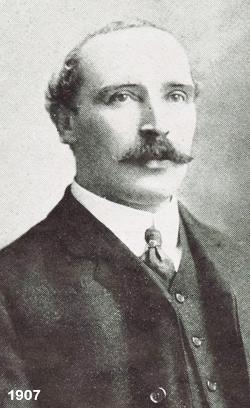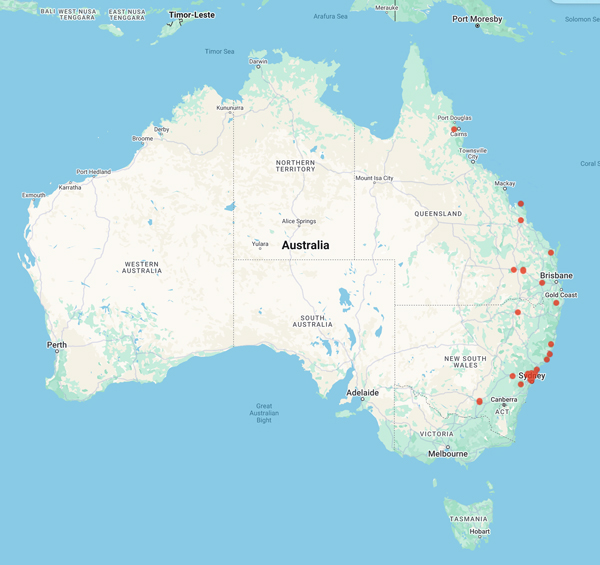
Council of Heads of Australasian Herbaria
Australian National Herbarium
Biographical Notes
 |
Council of Heads of Australasian Herbaria |
 Darnell-Smith, George Percy (1868 - 1942)
Darnell-Smith, George Percy (1868 - 1942)He was born on 15 October 1868 at Chipping Norton, Oxfordshire, England; he died on 11 April 1942, in Sydney, NSW.
He was the son of William Josiah Smith, surgeon, and his wife Theresa, née Haigh.
Educated at University College School, London, he graduated B.Sc. with honours in zoology and botany from University College, University of London, in 1891.
He lectured in chemistry and biology at the Merchant Venturers' Technical College, Bristol, from 1893 to 1907, was made a fellow of the (Royal) Institute of Chemistry of Great Britain and Ireland in 1900 and received the B.Sc. ad eundem from the University of Bristol in 1910.
In 1907-09 Darnell-Smith was assistant director of technical education in New Zealand and on 19 April 1909 he was appointed assistant microbiologist in the new Bureau of Microbiology in Sydney at a salary of £500.
In 1913 when its work was transferred to the Department of Agriculture he became biologist. These were Darnell-Smith's most productive years – he published some eighty articles and notes, mainly in the Agricultural Gazette of NSW, covering a vast array of topics such as bee diseases; absorption of water by root hairs; flying foxes; diseases of wheat, bananas and pome fruit; fungus diseases of mice; mushrooms; tobacco-curing; and prickly pear.
By 1915 Darnell-Smith had made his major contribution to world agriculture by developing copper carbonate powder as a fungicide to control bunt, a major disease of wheat that hitherto could only be treated with solutions of bluestone or formalin, thus damaging the seed.
Despite conclusive experiments, the importance of his findings was not immediately recognized in Australia; but in the early 1920s Darnell-Smith's dry copper carbonate became the standard treatment for seed wheat in the United States of America. A few years later it was finally adopted in Australia, costing a mere 'tuppence a bushel', and bunt ceased to be a problem.
On 1 July 1924 Darnell-Smith also became Director of the Botanic Gardens, Sydney, and officer-in-charge of Centennial Park. A keen botanist, he spent most of his time in the gardens. In 1930 he represented the State government at the International Botanical Congress at the University of Cambridge.
He resigned as biologist in 1927 and retired as director in 1933.
A most likeable bachelor, Darnell-Smith was an excellent raconteur. He never lost his English reserve yet was approachable. He was very fond of music, practically a chain smoker (rolling his own), somewhat absentminded, keen on boating and fishing and loved nature – his desk was often adorned with a single perfect flower.
He died on 11 April 1942 and was cremated with Presbyterian forms.
Source: Extracted from:
https://adb.anu.edu.au/biography/darnellsmith-george-percy-5886
Portrait Photo: 1907, NZ, https://kura.aucklandlibraries.govt.nz/digital/collection/photos/id/141535/
Data from 145 specimens
